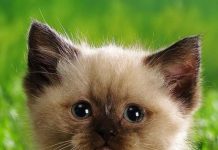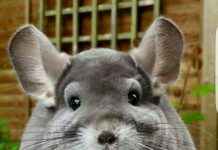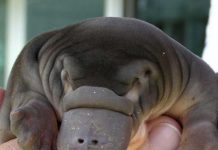American mink belongs to the family marten, is considered a predator. The little furry animal is so interesting and unusual that many lovers of exotic species of animals try to domesticate it. We learn interesting facts about the “queen” of fur-bearing animals from today's article.
Material Content:
Description, color scheme of fur
The description of the American mink is worth starting with its beautiful fur, which is valued throughout the world. The fur is brown or dark in color. A characteristic feature of the mink is a small white speck located in the area of the nose.
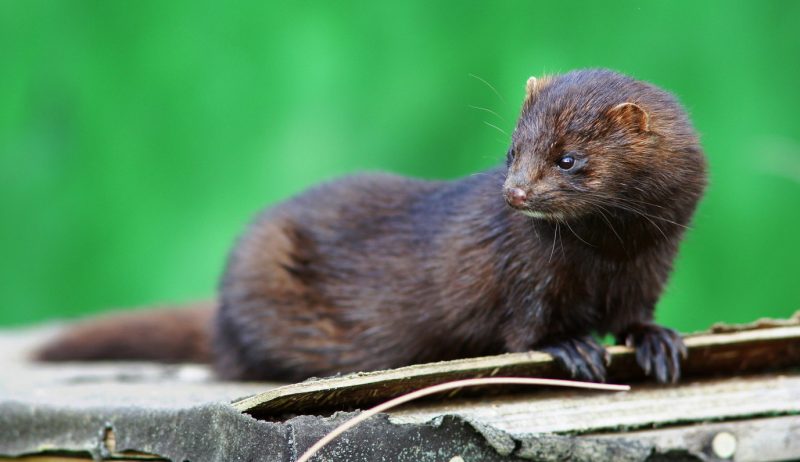
Spotted individuals are also found in nature. This is an exception to the rule rather than the norm. Specks can be located on the chest, throat or abdomen of the animal.
Mink itself looks very much like a small ferret.
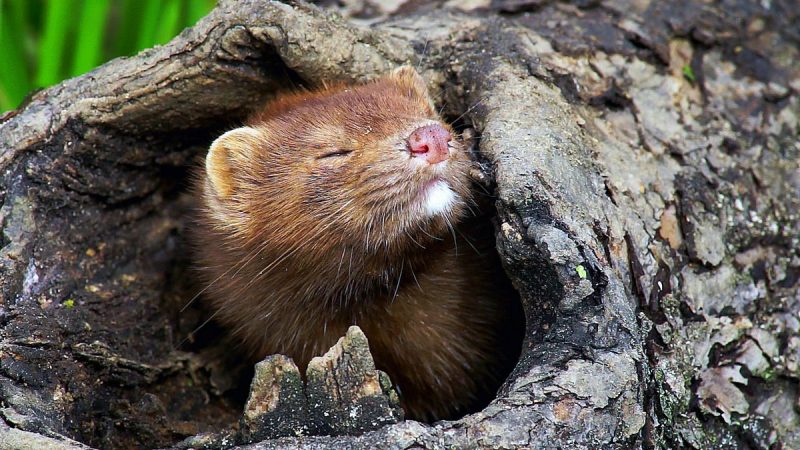
Its features are as follows:
- The body is quite long, elongated. Length from 30 to 48 cm. In this case, the males are slightly larger.
- The beautiful, fluffy tail, the length of which varies between 20-25 cm, is noteworthy.
- The muzzle of the animal is slightly extended forward, the eyes are small, resembling beads. The ears are rounded in shape.
- Paws are rather short. There are well-developed swimming membranes, which is why the mink feels comfortable in the water. It can quickly enough to sail away from the alleged enemy.
- The fur is quite thick and hard.
- The weight of the female is 1.2 kg. Males are much larger - 2.3 kg.
Mink is a real miracle of nature. In addition to a beautiful appearance, the animal has a playful character, which allows you to get along well with a person.
Habitat and subspecies
The habitat of the American mink is North America. The world first encountered this animal in the 18th century.The animal could be observed both in forest and rocky terrain.
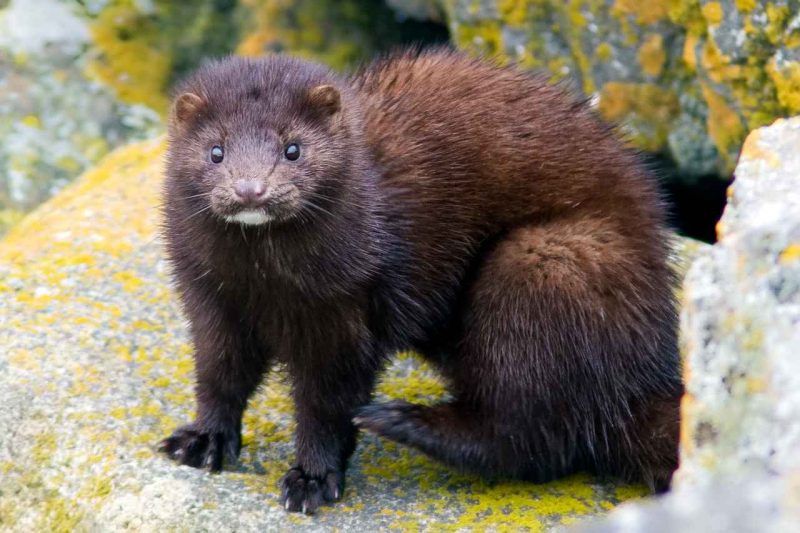
After many years, people came to the conclusion that you can make big money on animal fur. Farms were built that were engaged in the artificial breeding of fur animals.
They appeared in many regions of the USSR. Somehow, the mink escaped from such nurseries, and it could already be observed in Europe (Germany, England, Italy).
Depending on in what places the American mink lives, experts distinguish 3 of its subspecies.

They are as follows:
- Alaskan. It is distinguished by its large size and stiff fur, dark brown. It is found in Canada and Alaska.
- Eastern or otherwise Quebec. The fur is very soft. Despite the fact that it has a dark color, dots of gray-blue or ashy shade.
- Kenai Quite a large species of mink. Lives in North America (on the West Coast) and is often found in Alaska (in the southern part).
If earlier the American mink could only be found in North America, now it is very common in Europe, and even crowds out its European counterparts.
What does American mink eat?
American mink is an animal from the order of predators. Therefore, it feeds on small rodents (mice, voles), amphibians, and snakes.
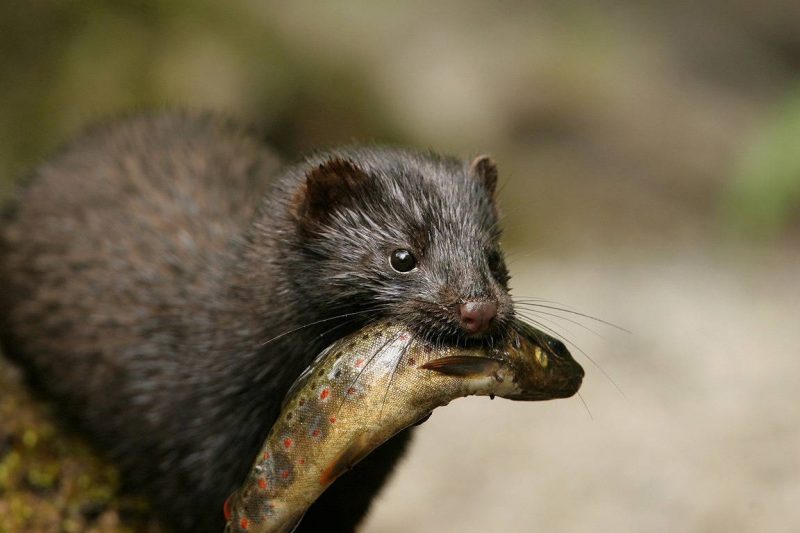
The animal likes to spend a lot of time in water, so it is not surprising that fish, crustaceans, frogs, and muskrats become its prey. Mink prefers to be on the same territory she has chosen, she is ready for years to inhabit it. But with a lack of food, she is forced to move, about 5 km can pass per day.
If there is a farm nearby, people need to take a closer look at rabbits and birds, and make good pens. A mink can dig under and ruin bird yards.
Carrion practically does not feed. Exceptions are the period of fasting. In this case, it can pick up garbage near the dwellings and eat stale meat.
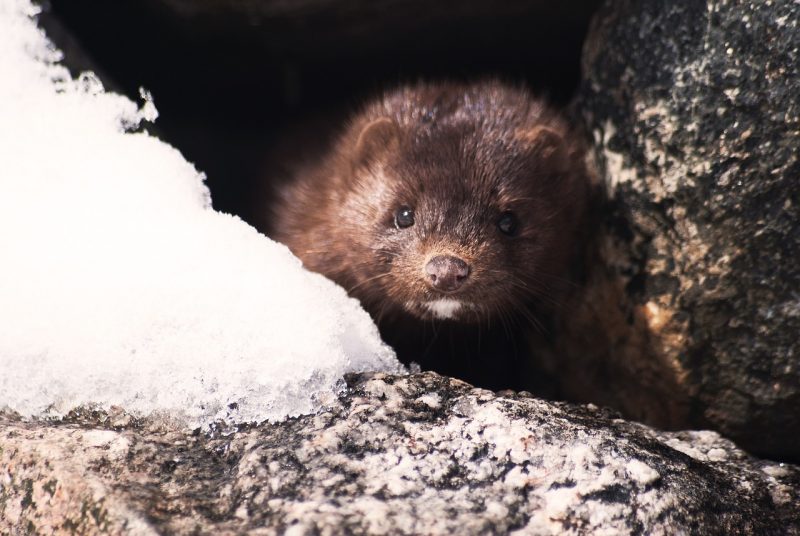
The animal makes reserves for a period of severe cold. Burrows bitten frogs, fish, small rodents in the ground.
At home, mink is usually fed with meat, fish, and dairy products, vegetables, and cereals are often added to the diet. Do not forget about the vitamins and minerals that can be purchased in specialized stores.
Features of animal breeding
The mink mating season lasts from February to April. At this time, the males are actively seeking females, arranging fights and noisily squealing.
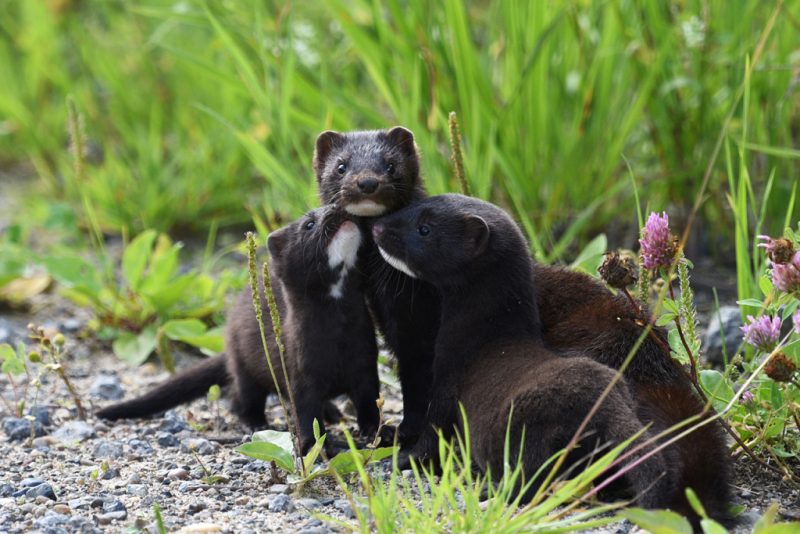
Pregnancy lasts about 72 days. Cubs appear in mid-May. Minks are quite prolific, one female can give birth to 8-12 cubs. The male does not take any part in caring for them.
Females develop much faster; by the age of 4 months, they outwardly resemble an adult. By the year ready to create offspring.
With males, things are somewhat different, their sexual activity occurs at 1.5 years.
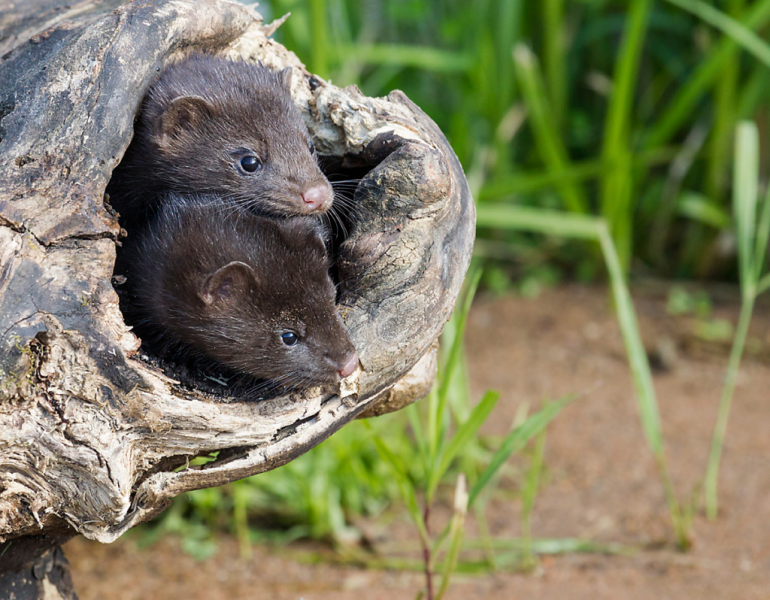
Life expectancy in the wild is 10 years. On farms, minks can live up to 16 years.
The mink population is declining every year. This is due to hunting for valuable animal fur.
Home breeding
Recently, it has become a truly fashionable tradition to keep this cute animal in your home.

It is worth noting that caring for a mink is quite simple, you need to follow only a few basic rules:
- A cozy house. We are not talking about any spacious boxes or drawers. It should be a large cage filled with hay, foliage, sawdust. Also, a nook should be made inside the cage, in which the animal could always take refuge.
- Tasty food. You need to feed the mink fully. The menu should contain fish, meat, milk, cottage cheese, vegetables, cereals. Many breeders purchase specialized feeds, making a big mistake. In this case, the animal will live a maximum of 5-6 years.
- Time for outdoor activities. For a long time, the animal cannot be in the cage. He needs to be taken for a walk (on a leash), play, allowed to arrange water procedures in the bathroom or in the pond.
American mink is a wayward animal. The character is so individual that it is simply impossible to predict it in advance.
The difference between European and American mink
These two types of minks are very similar to each other.
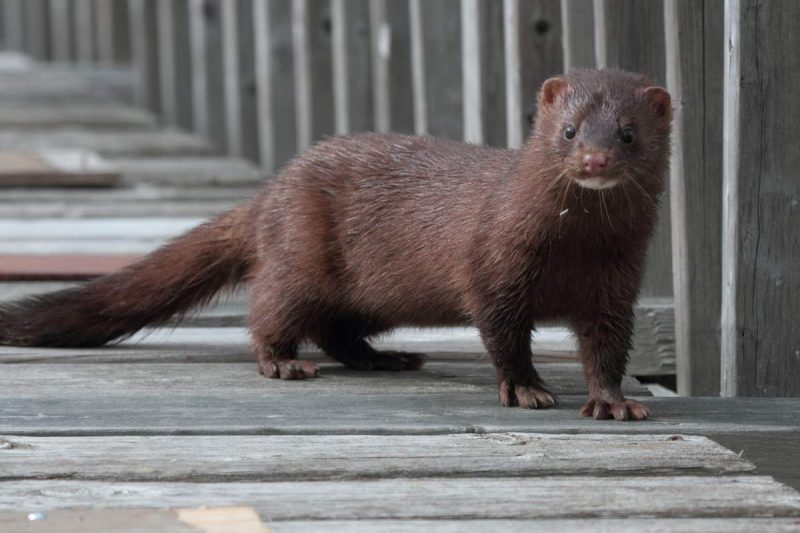
The differences are as follows:
- colors. In the American mink, a white spot is located above the lower lip, in the European animal, also above the upper part of the lip;
- chromosome set. The American - 30, European - 36. That is why these species can not be crossed with each other;
- the size. American minks are larger.
Millions of women dream of a mink coat, but remember, up to 50 animal skins are spent on one mantle. The population of this animal decreases every year, many species are already listed in the Red Book.



